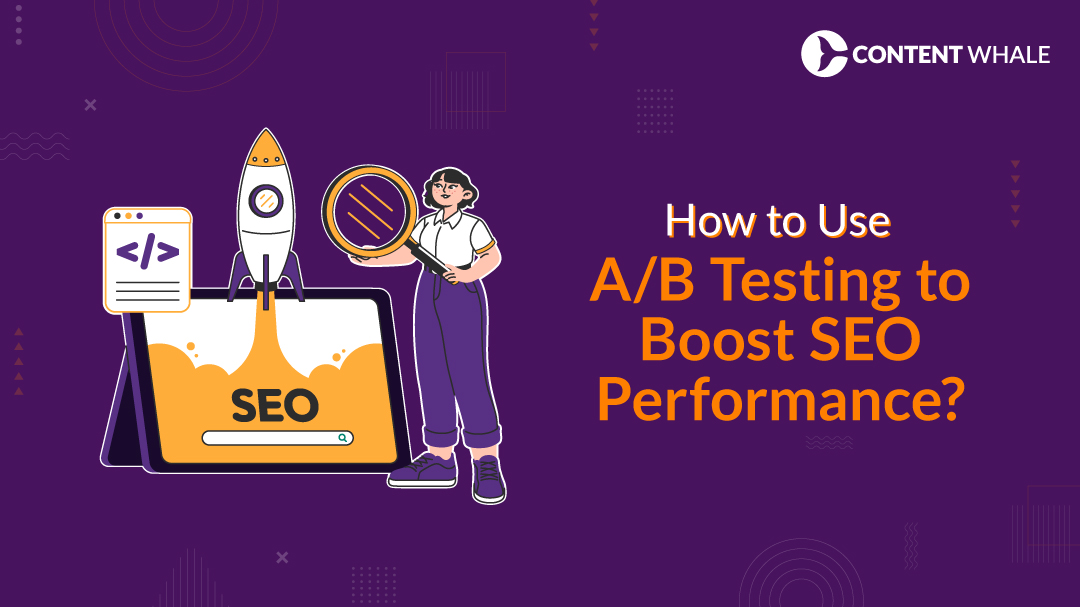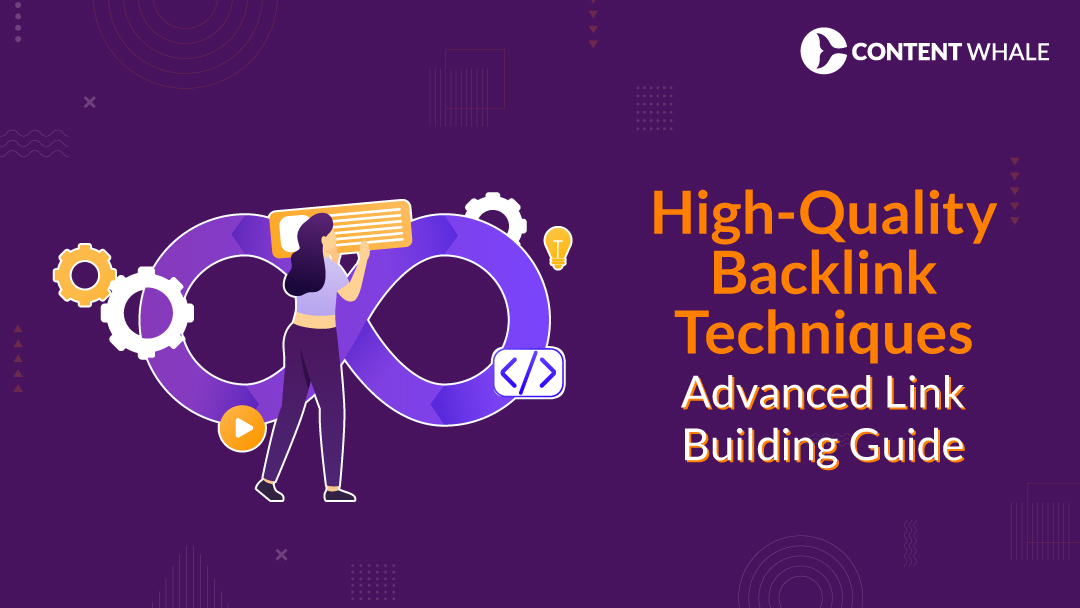Getting impressions but no clicks?
Your meta description might be the problem.
That short snippet under your page title plays a bigger role than most people realize. A strong description SEO strategy can boost your click through rate (CTR) and help your page stand out even if Google rewrites part of it.
With search shifting toward AI summaries and answer boxes, writing clear, keyword rich descriptions matters more than ever. Brands are teaming up with Content Whale to boost their CTR and ROI — where are you? Join the squad and grow your online visibility like never before.
This guide will walk you through exactly how to craft meta descriptions that drive clicks, match intent, and support your overall SEO performance.
Let’s break it down step by step.
What Is Description SEO and Why It Matters
A meta description is the short summary shown beneath your page title on Google. It’s your pitch to the searcher one or two lines to explain why they should visit your page.
And description SEO is the practice of writing these summaries in a way that boosts your click through rate and supports your broader SEO goals.
1. Meta Description vs. Other Tags
Unlike title tags, meta descriptions don’t directly impact rankings. But a good one increases clicks, and those user signals can improve your visibility.
For example, if your blog on “best budget phones” has a plain or missing description, Google might auto-pull random text. But a clear, optimized snippet like “Top 10 budget smartphones under ₹15,000 with camera and battery comparisons” is more likely to earn clicks.
2. Impact on CTR and Rankings
Google may not always use your exact description, but that doesn’t mean you skip it. Say two sites both rank for “digital marketing tools.” One says “Explore a full list of tools with reviews and pricing,” while the other says nothing.
The first one wins the click. Better engagement can feed into better rankings over time.
3. AI and Answer Engines
With Google’s SGE and tools like ChatGPT summarizing content directly on SERPs, description SEO helps your page appear as a clear source.
For instance, if someone searches “how to write meta descriptions,” and your snippet directly answers that in a clean format, you increase your chances of being quoted or featured in AI answers.
If your meta descriptions aren’t getting clicks, they’re not doing their job. Let’s break down exactly how to write ones that do.
Meta Description Best Practices
A strong description SEO strategy doesn’t rely on guesswork. It follows clear rules that align with how users search and how search engines display content.
If your goal is higher click through rate and better visibility, these are the practices that actually work.
1. Ideal Length and Keyword Placement
Keep your meta descriptions between 100 to 150 characters. Any longer and search engines may cut them off. Place your primary keyword early in the sentence, along with related terms.
For example, a good snippet for a service page could be: “Get expert-level SEO meta tag writing and meta description optimization for faster ranking and better results.”
2. Match User Intent
Read the search results for your target keyword. What kind of answers show up? Match your description with what the user expects.
If they are looking for a tutorial, write: “Step-by-step guide to optimize meta descriptions for higher traffic.” Matching user intent ensures you show up in relevant queries.
3. Use Compelling Copy and CTAs
A description is not just a summary. It is a pitch. Start with action words like discover, explore, get, or learn. Add a simple call to action such as “Start optimizing your pages today.”
This subtle prompt boosts your click through rate by turning a static SERP snippet into an invitation.
4. Avoid Duplication and Misleading Hooks
Do not reuse the same meta across multiple pages. It confuses both search engines and users. Also, avoid promising something your page does not deliver. Misleading text may bring a click but leads to high bounce rate and hurts your credibility.
Descriptions should align with your actual content, include natural keyword placement, and be unique for each page. This keeps your description SEO clean, useful, and optimized for both humans and machines.
Advanced SEO Description Tactics for 2025
As AI-powered answers and generative search results expand, your description SEO approach must evolve. These next-level tactics will help you stand out in SERPs and AI summaries.
1. Optimize for AEO and GEO
Modern search tools don’t just look for keywords. They scan your content for context, clarity, and how well it answers user queries. That’s where Answer Engine Optimization (AEO) and Generative Engine Optimization (GEO) come in.
Best Practices:
- Write meta descriptions in a conversational, Q&A format
- Target long-tail queries and intent-driven phrases
- Make each snippet self-contained and informative
Example:
Instead of:
“Learn more about description SEO and its benefits.”
Try:
“Need better meta description optimization? This guide covers how to write snippets that increase traffic and match user intent.”
2. Include AI-Friendly Signals
AI bots rely on clean code and accurate metadata to understand your page.
Checklist:
- Use proper HTML tags with no syntax errors
- Avoid relying solely on JavaScript to render meta tags
- Add structured data to reinforce page type and content
- Match your SEO meta tag and description content with actual page text
Example:
A service page with schema for “Service” type and a meta description like “Expert SEO content writing services that boost visibility and click through rate” is more likely to appear in AI summaries.
3. Test and Monitor Performance
You won’t know what works without tracking results.
Tips:
- Monitor CTR using Google Search Console
- If CTR is below 1.5%, consider rewriting the meta
- Check which pages Google rewrites frequently
- Use tools like A/B testing plugins or even spreadsheets to compare CTR before and after changes
Example Test:
Page A:
“Top SEO tools list for 2025” – CTR 0.9%
Page B (Rewritten):
“Compare the best SEO tools for 2025 with features and pricing” – CTR jumps to 2.1%
Testing helps you improve description SEO over time instead of setting it and forgetting it.
| Tactic | What to Do | Benefit | Example |
| Optimize for AEO and GEO | Write meta descriptions in Q&A format using long-tail phrases | Improves visibility in AI-generated answers and featured snippets | “Looking for meta description optimization tips? Here’s how to improve CTR fast.” |
| Include AI-Friendly Signals | Use clean HTML, proper meta tags, fast load speed, and structured data | Helps AI bots understand and prioritize your content | Meta tag reflects page content, schema added for “Service” type |
| Use Conversational Language | Write in a tone that mirrors how users ask questions | Increases chances of being pulled into voice and AI search | “How to write meta descriptions that actually get clicks” |
| Refresh Descriptions Quarterly | Re-optimize old meta tags after updates or low CTR detection | Keeps snippets aligned with current SEO trends | Updating a 2023 description for new keywords or content structure |
| Test and Monitor Performance | Use Search Console to track CTR, test variations, and rewrite low performers | Improves click through rate and long-term performance | Changing “SEO guide” to “Step-by-step SEO meta tag tutorial” |
If you want your pages to stay competitive in 2025, it’s time to stop writing generic snippets and start applying these advanced description SEO tactics.
Common Pitfalls and How to Fix Them
Even small errors in your meta descriptions can reduce your visibility and lower your click through rate. Avoiding these common issues will help you clean up your description SEO and get better results across your site.
1. Overstuffing Keywords
Trying to force in too many keywords makes your snippet unreadable.
Fix: Use your primary keyword once near the start, and include one or two LSI keywords naturally.
Example:
❌ Meta description SEO keyword guide for SEO meta tag optimization in SEO.
✅ Learn smart meta description optimization strategies to improve click through rate and visibility.
2. Duplicate Descriptions Across Pages
Search engines ignore repeated snippets and may auto-generate less effective ones.
Fix: Write unique descriptions for each URL with relevant user intent in mind.
3. Misleading Hooks That Don’t Match Content
Overpromising in your description may earn a click but increase bounce rate.
Fix: Make sure your description reflects the content on the page. Accuracy keeps users engaged.
4. Ignoring Mobile and SERP Preview Width
Too long, and your text gets cut off. Too short, and it lacks clarity.
Fix: Stay between 100 to 150 characters. Test previews using tools like SERPsim.
5. Leaving the Description Empty
When you skip writing a meta description, search engines pick random text.
Fix: Always write a manually crafted, intent-driven snippet with proper keyword placement.
| Pitfall | What Goes Wrong | Fix | Example |
| Overstuffing Keywords | Too many keywords make the snippet unreadable | Use the primary keyword once and sprinkle LSI keywords naturally | ❌ SEO meta tag guide for SEO experts SEO tips SEO tricks✅ Master description SEO with simple optimization tips. |
| Duplicate Descriptions Across Pages | Same meta used on multiple URLs | Write unique descriptions for each page | Use product-specific benefits for eCommerce product pages |
| Misleading Hooks | Promises don’t match content | Align the description with the actual content | ❌ Free tools inside for a paid tools page |
| Ignoring Length Limits | Descriptions get cut off or look empty in SERPs | Stick to 100–150 characters and test on preview tools | Use tools like SERPsim or Mangools SERP Preview |
| Leaving the Description Empty | Google generates poor-quality snippets from random page text | Always write a manual, intent-based description | Auto-generated snippet may show a navigation label or unrelated text |
| No CTA or Passive Copy | Snippet lacks engagement or direction | Add clear CTAs using active voice | ✅ Learn how to boost click through rate with better meta descriptions. |
Final Thoughts
A SEO description is often treated like an afterthought. But when done right, it grabs attention, improves click through rate, and signals value to both users and search engines.
The real problem? Most brands write descriptions that are too vague, too long, or completely disconnected from user intent. This leads to Google rewriting your snippets, poor engagement, and a steady drop in visibility.
Content Whale changes that. We do not just fill metadata. We write sharp, search-ready descriptions that speak directly to intent. Our team helps brands increase CTR, improve ROI, and show up where it matters.
Brands are already partnering with us to win clicks. If you are not, your competitors will. Let’s connect today and fix it before it costs you more.
FAQs
1. What is description SEO?
Description SEO refers to writing optimized meta descriptions that align with user intent, include smart keyword placement, and improve click through rate. While it doesn’t directly affect rankings, it influences visibility by boosting engagement and helping your content stand out as a relevant SERP snippet in AI-powered and traditional search results.
2. How does a meta description affect SEO?
A strong SEO meta tag improves your click through rate by encouraging users to click through from search results. Although it doesn’t directly impact rankings, good description SEO helps search engines better understand your page relevance and can influence how often your content is shown for competitive queries and intent-driven searches.
3. What is the ideal length for a meta description?
For effective meta description optimization, keep your description between 100–150 characters. This range ensures the full SERP snippet is visible, supports proper keyword placement, and improves click through rate. Going too long leads to cut-off text, while too short can miss context or fail to attract attention in search results.
4. Why is Google rewriting my meta descriptions?
Google rewrites meta descriptions when it finds your snippet too vague, irrelevant, or misaligned with user intent. Poor description SEO like duplication, keyword stuffing, or missing SEO meta tags causes rewrites. Writing unique, intent-matching descriptions with smart keyword placement reduces the chance of automatic replacements and improves click through rate.
5. How can I improve my click through rate using meta descriptions?
Improve click through rate by writing clear, action-oriented meta descriptions with proper keyword placement, emotional triggers, and a strong call to action. Effective description SEO aligns your SERP snippet with user needs, includes relevant keywords, and avoids vague or passive language. A/B testing also helps refine performance over time.
6. How often should I update meta descriptions?
Update your SEO meta tag descriptions every quarter or after major content changes. Regularly reviewing your description SEO ensures alignment with current user intent, improves click through rate, and keeps your content competitive. Check Google Search Console data to identify low-performing pages and adjust your meta description optimization accordingly.





